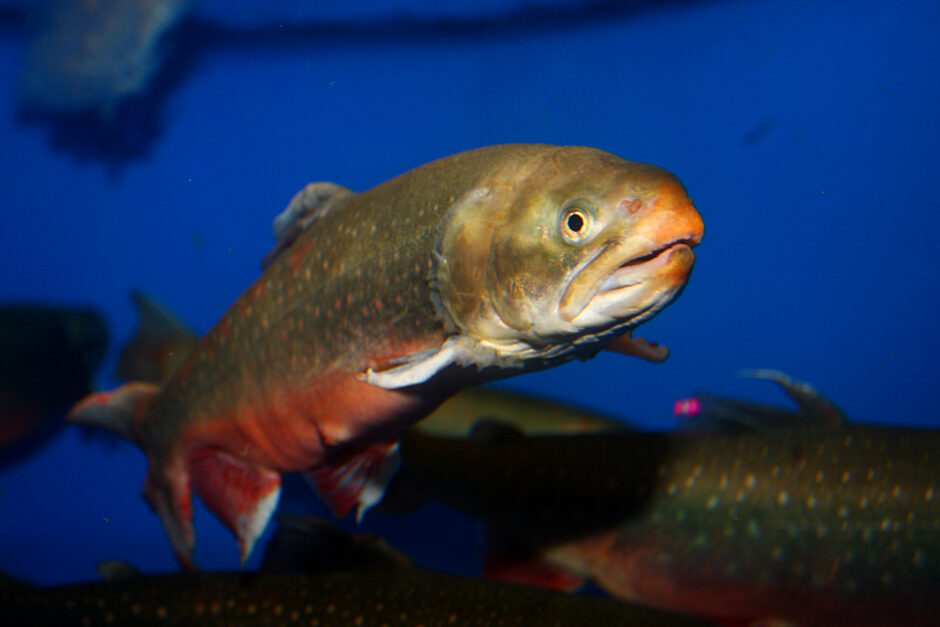The Importance of Characterization in Fishery Management
 Arctic char in a tank (Credit: Martin Cathrae via Flickr CC BY-SA 2.0)
Arctic char in a tank (Credit: Martin Cathrae via Flickr CC BY-SA 2.0)Each species has its niche in its native ecosystem; from the smallest microorganism to larger predator species, each plays an important role in the ecological chain. This uniqueness from species to species makes characterization an essential component of fishery management.
Characterization means defining habitat, breeding and spawning behaviors, populations, distribution, and physical traits of a certain species. Whether it be species- or ecosystem-based management, understanding the needs and behaviors of a key species impacts management decisions and strategies.
Understanding such characteristics helps anglers identify high catch rate sites and assist managers in restricting fishing of certain species at specific times of year. Understanding fingerling and yearling behaviors of natural-born fish also helps inform stocking efforts and gives stocked fish the best opportunity to reach adulthood.
Case Study: Characterization of Arctic Char
A 2024 study published in Arctic Science characterized anadromous Arctic char, specifically focusing on winter habitat and spawning behaviors. Because Inuit fishers have sought out the species for years, they were a critical resource for the study of finding Arctic char habitats.
Key research topics included characterization of winter habitat and incubation areas for Arctic char. Beyond simply identifying sites with high occupancy, the study sought to explain why certain portions of the five lakes studies experienced a greater concentration of arctic char, assessing water temperature and dissolved oxygen using a YSI multiparameter probe and a HOBO Pro V2 and Pendant at deeper sites.
Results of the study revealed that incubation areas depended on shallower depth and warmer lake bottom temperatures. The warmer water was found to be beneficial for egg maturation, and these sites were also more productive, providing food to fry that hatch during the winter. Post-smolt and older Arctic char tended to favor the cold littoral zone of the evaluated lakes.
Conclusion
In the case of Arctic char specifically, this data helps improve understanding of the species and guide angling efforts. Because winter temperatures and lake ice conditions influence spawning, it’s important for communities that rely on certain populations to understand how distributions and populations may change in the future under climate change.
In this study, the researchers collaborated with local Inuit groups that have historically relied on Arctic Char for food in the winter. Such collaboration is a key component of fishery research and management as indigenous populations have years of experience fishing in the region and are also invested in the preservation and protection of the species.
As the climate continues to change as a result of natural and anthropogenic stressors, varying winter temperatures may make lakes inhospitable to young, sensitive fish everywhere. Such a change would impact populations as fewer fry reach spawning age and fewer and fewer fish are born over the years.
In order to prepare for the future, characterization research is essential to managing and protecting native populations as the climate and habitats change.


0 comments